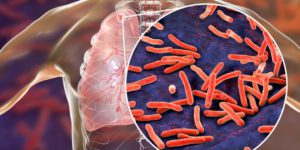
Explanation:
• Livestock and fisheries play an important role in Indian economy. About 15 million people depend upon both livestock and fisheries each for their livelihood.
• Livestock: o Department of Animal Husbandry & Dairying, Ministry of Fisheries, Animal Husbandry and Dairying has released the 20th Livestock Census report.
o It has been conducted periodically since 1919-20 which covers all domesticated animals and its headcounts both in rural and urban areas.
o The last livestock census was conducted in 2012. o India has a total Livestock population is 535.78 million as per the 20th Livestock Census. o Various species of animals (Cattle, Buffalo, Yak, Sheep, Goat, Pig, Donkey Camel, Dog, Rabbit, Elephant etc.), poultry birds possessed by the households, household enterprises/non-household enterprises and institutions are counted at their site. Hence statement 1 is correct.
o State-wise Uttar Pradesh (UP) has recorded highest livestock population in 2019 followed by Rajasthan, MP, West Bengal, Bihar, Andhra Pradesh, Maharashtra, Telangana, Karnataka and Gujarat.
• Fisheries:
o To promote fisheries sector was envisaged under the Neel Kranti Mission/ Blue Revolution during 7th five year plan (1985-90). o However a separate ministry for fisheries came into existence recently and the announcement for the same was made in interim budget of FY 2020. Hence statement 3 is not correct.
• Dairy Sector:
o Dairy sector is considered as one of the most important agricultural sector in India
o In 2018-19: milk production in India- 187.7 million tonnes and Per Capita Availability (gms/day) of
milk – 394.
o About Merchandise Exports from India Scheme (MEIS):
It is one of the two schemes introduced in Foreign Trade Policy of India 2015-20, as a part of Exports from India Scheme. (The other scheme is Service Exports from India Scheme).
It seeks to promote export of notified goods manufactured/ produced in India. MEIS is a major export promotion scheme implemented by the Ministry of Commerce and Industry.
The scheme provides incentive in the form of duty credit scrip to the exporter to compensate for his loss on payment of duties. The scrip can be transferred or used for payment of a number of duties/taxes like customs, excise etc.
Later in 2018, government extended the benefits under the scheme to dairy sector including skimmed milk, dairy spreads, fresh cheese etc. Hence statement 2 is not correct.
Hence Option B is the correct choice.


